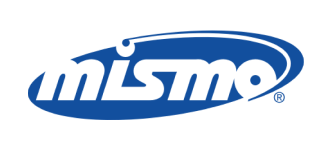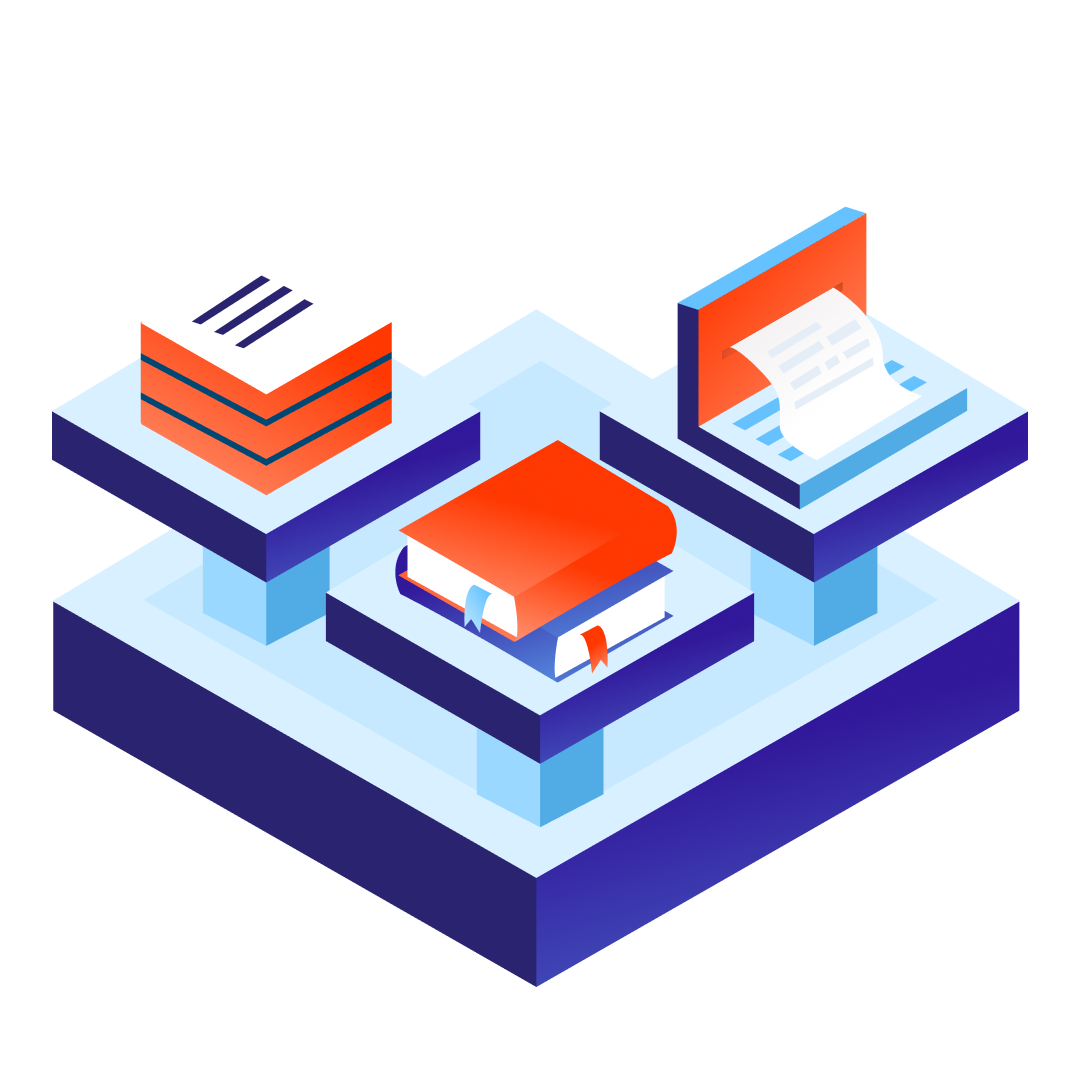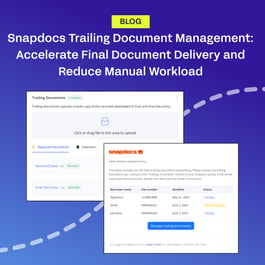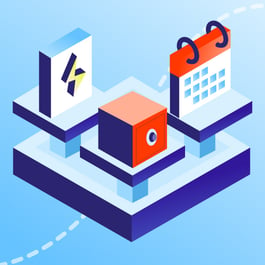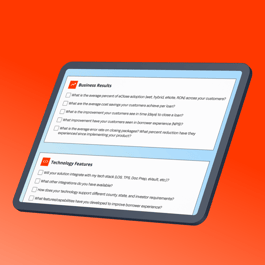The COVID-19 pandemic accelerated what had been a glacially moving digital transformation in the mortgage industry. It caused lenders to realize that eClosing software is critical to not only business continuity, but also keeping pace with — and capitalizing on — the surge in refinances and purchases that followed plummeting interest rates.
Lenders who already had eClosing technology in place were equipped to close more loans and transition to working from home without interruptions. When asked about how COVID-19 affected her company, Sheri Nedley, SVP of Capital Markets and Operations at The Mortgage Firm, said, “We didn’t miss a beat, and we ended up closing a record number of loans in March.”
It’s clear that lenders who are at the forefront of implementing eClosing technology gain numerous benefits, as well as a sizable advantage over competitors. Here are six key benefits that lenders get from digital closings.
1. Better borrower experience
Digital transactions are embedded in our lives — from mobile banking to tax filing. Consumers expect the mortgage experience to be digital too, and almost all of them are taking advantage of electronic options when they’re given the choice.
A majority of borrowers who got a mortgage within the last year reported using digital tools when they were available, according to Ellie Mae’s 2019 Borrower Insights Survey. Of those surveyed, 83% used an online portal for electronically signing and notarizing documents when offered the option.
The closing is the final, celebratory step in the homebuying process for borrowers. Yet, it’s stressful, opaque, and rushed. Digital closings give borrowers the ability to review paperwork and eSign prior to the closing appointment, which increases convenience and reduces the stress that borrowers feel when they see their documents for the first time at the closing table. Jeff Henkel, Vice President of Closing Fulfillment and Post Closing at Taylor Morrison, explained:
"Most signing appointments are only booked for one hour and the borrower immediately has to dive into signing 100+ pages they’ve never seen before. While there are settlement agents that are great at thoroughly explaining every document, it still can feel fast-paced and rushed full of unnecessary anxiety and apprehension, instead of a celebration of homeownership."
—Jeff Henkel, Vice President of Closing Fulfillment and Post Closing at Taylor Morrison
When borrowers can carefully review their documents, ask questions, and point out document errors before their closing, they trust the process more. Digital closing technology also guides them to eSign where needed, ensuring that they don’t miss any fields.
“Borrowers don’t talk about how easy it was to apply, and we have a fantastic digital application that’s used. They talk about, ‘Wow, it was so easy to sign my documents at the end,’” said Katherine Campbell, Chief Digital Officer at Assurance Financial, during a virtual town hall. When borrowers walk away happy, lenders create repeat customers and generate referral business.
2. Increased efficiencies
The most effective ways to streamline real estate closings are to reduce paperwork, automate manual tasks, and shorten the closing appointment. Digital closings achieve all these objectives. With these efficiencies, lenders can close more home loans faster and borrowers enjoy a quicker mortgage process.
Reduced paperwork
Mailing paper documents back and forth is time-consuming. Paper closings also create more work for lenders, as they have to print and scan documents in order to convert paper packages into electronic files. Digital closings — whether it’s a hybrid closing or an eClosing — either reduce or completely eliminate the amount of paperwork that’s involved.
When documents are digitized, eSigned, and eNotarized, lenders can immediately access the completed documents. This enables them to start their post-closing processes faster and fund the same day as the closing. Since electronic files can be instantly transferred and shared with other parties, lenders are able to instantaneously send the note to their investors and warehouse lenders. As a result, lenders can sell loans faster and reduce their dwell time.
“[W]e have the package delivered back within the [digital closing] platform, meaning we don’t have to wait for the original documents to come back to us in an overnight,” said Nedley. “That allows us to commit our loans faster, which means that turnover on our warehouse lines is faster. So you have everything moving a day, two days, three days faster than it was before.”
Automate and reduce manual tasks
With fewer paper documents, lenders reduce the amount of time that’s spent downloading, printing, and scanning files. For example, Evergreen Home Loans had four funding assistants who would scan the completed package, pull out the paper note, and recycle the rest of the package. After implementing digital closings, Evergreen Home Loans was able to turn those assistants into funders. Not only have those assistants transitioned into more engaging jobs, but also Evergreen Home Loans strategically repurposed existing staff into areas that would have a bigger impact on their business.
Other time-consuming tasks, like entering data and emailing updates to all parties, can be automated with eClosing software. The Mortgage Firm used to manually email the loan team, title, and the borrower. Now, The Mortgage Firm uses digital closing technology to automate all of that work that’s needed to keep various parties up-to-date. Instead of each email being a separate step in their process, sending those emails is now just one step for the closer.
Shorten the closing appointment
Closing appointments take an hour or more because borrowers are seeing their documents for the first time at the closing table, asking questions, discovering errors, and flipping through paper. With digital closings, lenders give borrowers the ability to become familiar with their loan documents and get the answers they need before the closing. Borrowers can even eSign 75% of a typical closing package ahead of time, which drastically reduces the amount of documents that need to be completed during the closing. This all results in a more efficient closing experience for borrowers, and the closing appointment is reduced to just 15 minutes or less.
3. Lower costs
Traditional paper closings carry many costs — from the paper to ink, shipping, physical storage, and the employee bandwidth that’s spent on manual tasks. Lenders are also struggling with continued rising costs. The average cost to close a mortgage increased from $5,958 in 2013 to $8,405 in 2018. “Lenders are rushing to technology because our margins keep shrinking every day, and the only way to combat this is to be more efficient internally,” Jan Valencia, Residential Mortgage Systems Project Manager at KS StateBank, said about why lenders are looking at technology like digital closings.
Digital closings can eliminate many operational expenses. Electronic mortgages are estimated to reduce costs by an average of $1,100 per loan, which adds up to $1 billion in annual savings for the industry.
Staffing costs are lowered too, since the efficiencies mentioned above can increase an employee’s loan capacity. The Mortgage Firm is one of many lenders who are using digital closings to close more loans. Without hiring more staff, they were able to close 13.3% more loans in 2019 than in 2018.
This strategy of lowering costs by increasing efficiencies is echoed by KS StateBank. “Say a closer can close 50 files in a month. If I’ve got technology that takes away extra phone calls, extra corrections, extra emails — maybe that same closer can close 75, so I can now grow my business without putting a new body in there,” said Valencia.
By increasing employees’ loan capacity, lenders are able to eliminate the variable cost of temporarily adding headcount to accommodate busy seasons — not to mention the time and resources that are spent training temps.
4. Greater accuracy
With hundreds of pages in a loan package, it can be easy for anyone to miss a signature or notarization when flipping through each sheet of paper. This risk is greatly diminished with hybrid closings and eClosings.
When lender and title documents are uploaded to the eClosing software, they are either manually or automatically tagged with eSignature and eNotarization fields. The technology guides users to sign, notarize, or fill in any applicable areas of the document. The closing can only be completed when all necessary fields are filled in.
Additionally, since borrowers have time to review the package prior to the closing appointment, they’re able to catch any document errors well before arriving at the closing table. This gives lenders and settlement companies plenty of time to correct the errors and generate new documents, without having to reschedule the closing. Errors that get surfaced at the closing table are reduced by 80%, and lenders can ensure a successful closing.
5. Increased security
Papers can easily be misplaced or lost in the mail. If they land in someone else’s hands, there’s no way to protect nonpublic personal information (NPPI), like social security numbers and financial details.
Digital closings offer numerous security benefits, including digital audit trails, tamper-evident seals, and restrictions on document access. Audit trails track users’ actions, so you know who has viewed or signed each document and when. Tamper-evident seals protect the integrity of digital documents, providing proof that a document was altered. Document restrictions permit only authorized individuals to view all or some of the closing documents.
Digital closing technology greatly reduces risk for lenders and adds important protections for borrowers and their NPPI.
6. More environmentally friendly
Hold any loan package in your hands and you can feel how environmentally unfriendly wet closings are. In fact, with about 200 pieces of paper used per closing and around 4.8 million mortgages closed each year, the industry is easily using 960,000,000 pieces of paper annually. Based on these figures, eClosings are able to save an estimated 1,200 acres of trees each year.
Not only is going green good for the environment, but it’s also looked upon favorably by consumers — particularly Millennials and Gen Z. These two generations are increasingly entering the housing market each year, and a majority of them are willing to pay more for sustainable products and brands.
Lenders can expect to experience these six benefits once they’ve adopted digital closings. However, the benefits of digital closings don’t stop here. You can hear directly from Credit Union Home Mortgage Solutions on how they’re using digital closings to improve the closing process and solve many of their challenges that they’re facing. Find out what they had to say by watching the “How leading lenders use digital closings to solve their biggest pain points” webinar.

